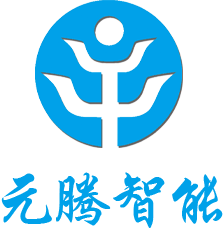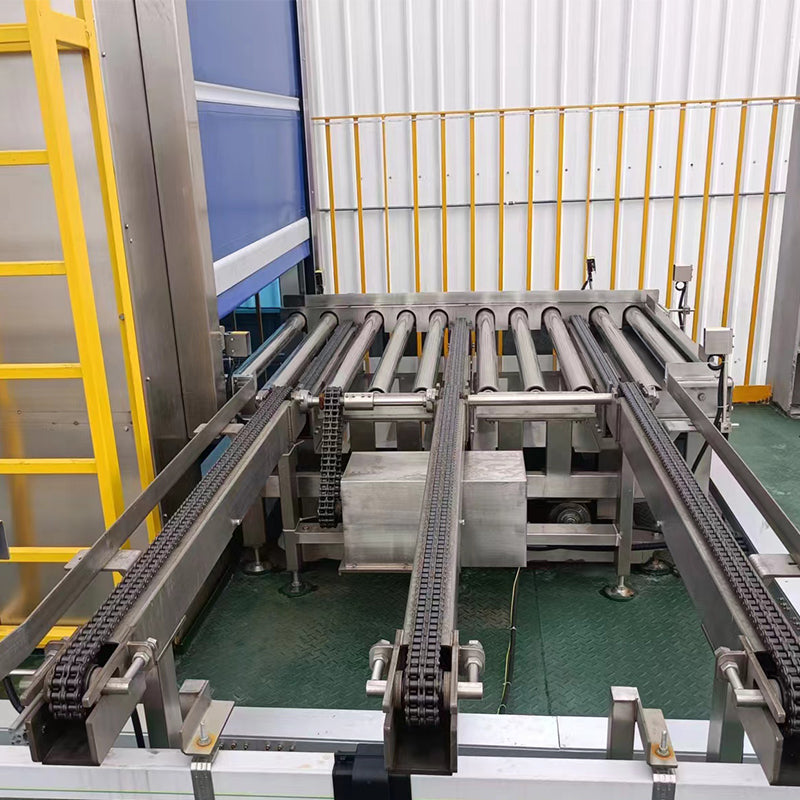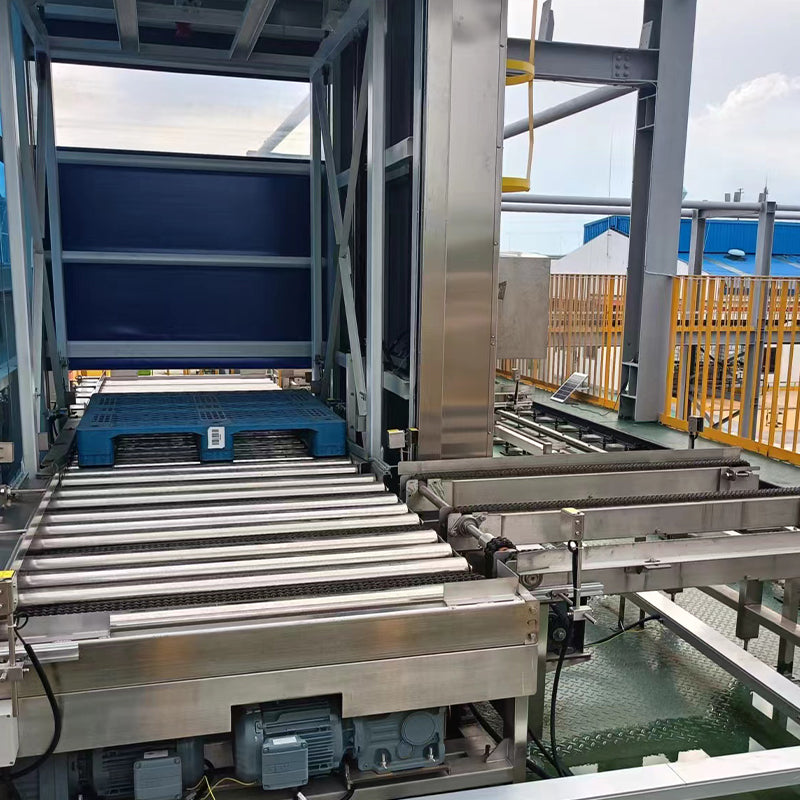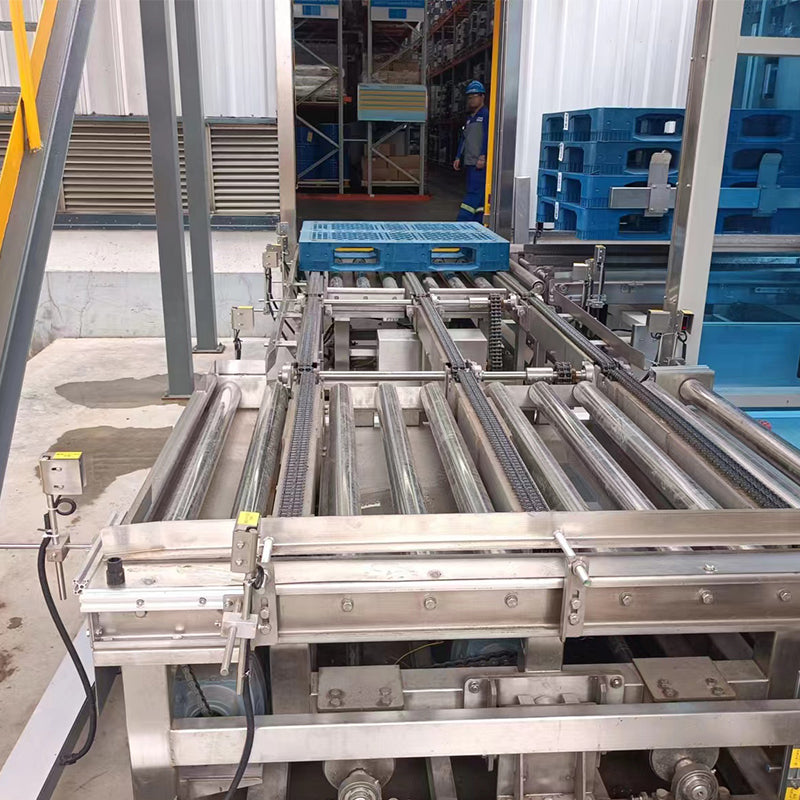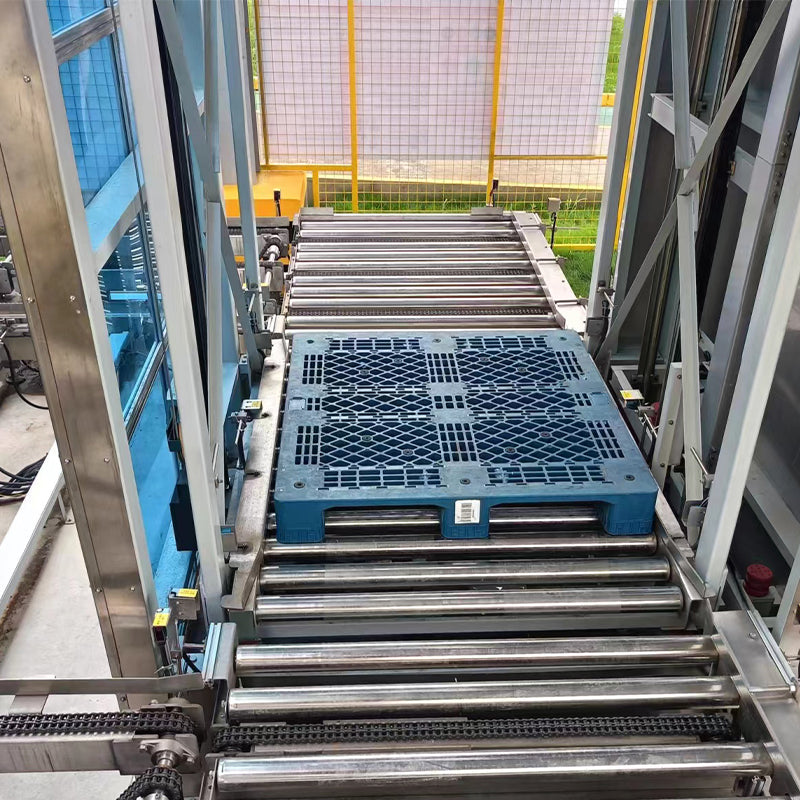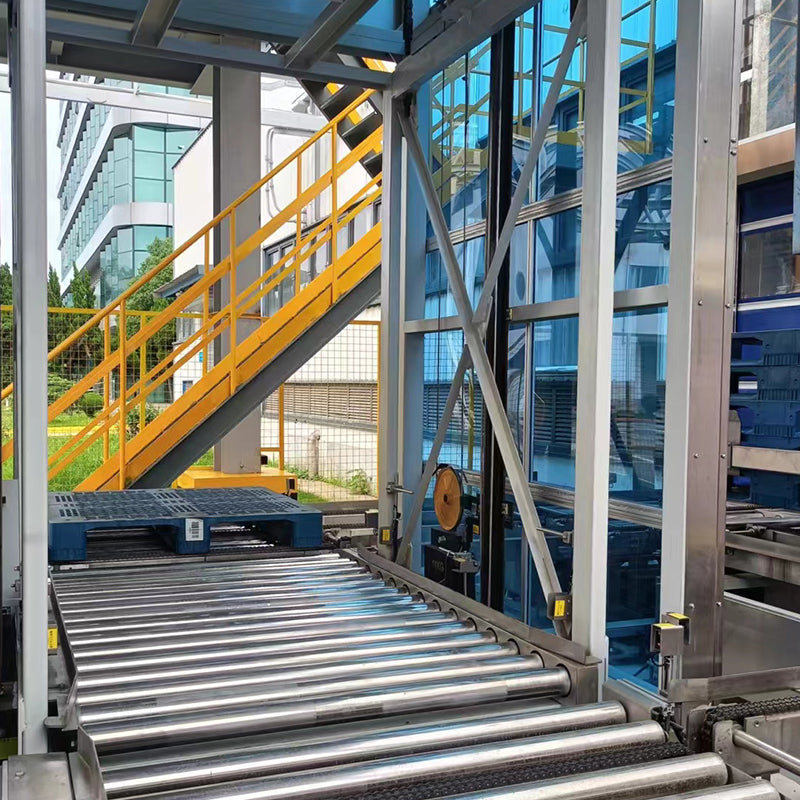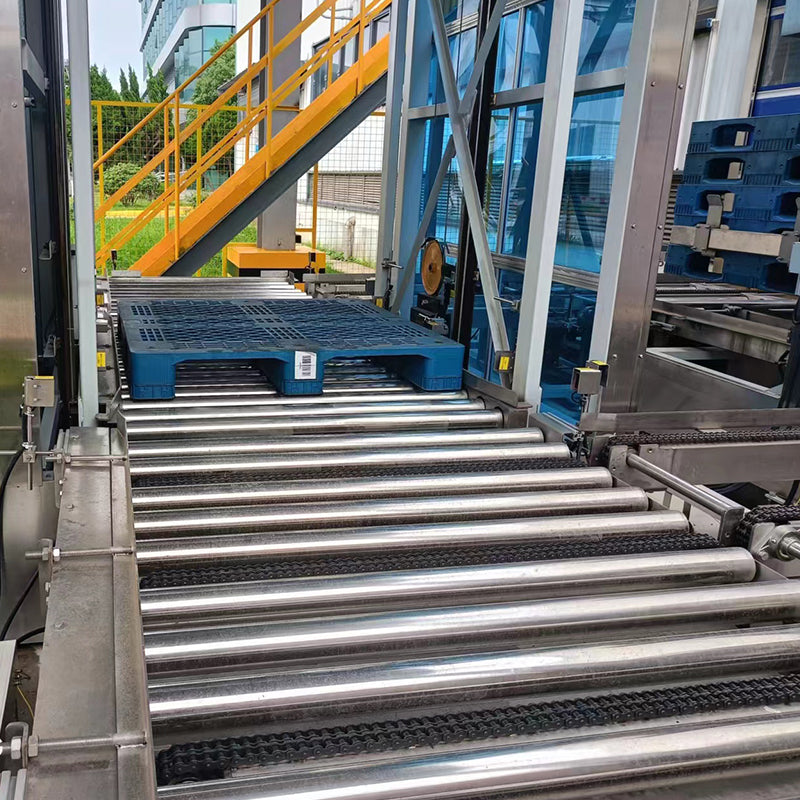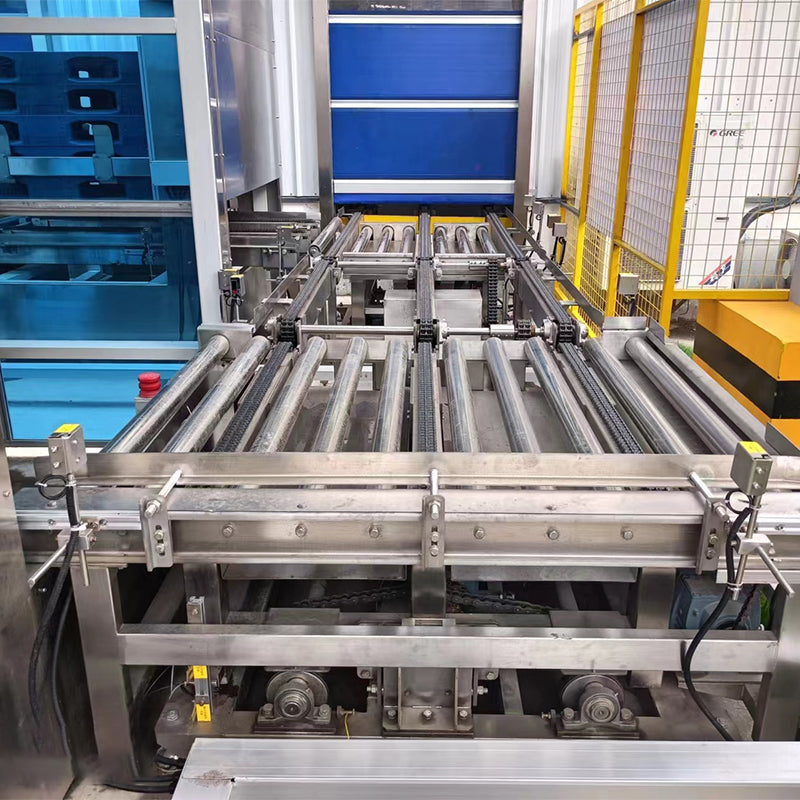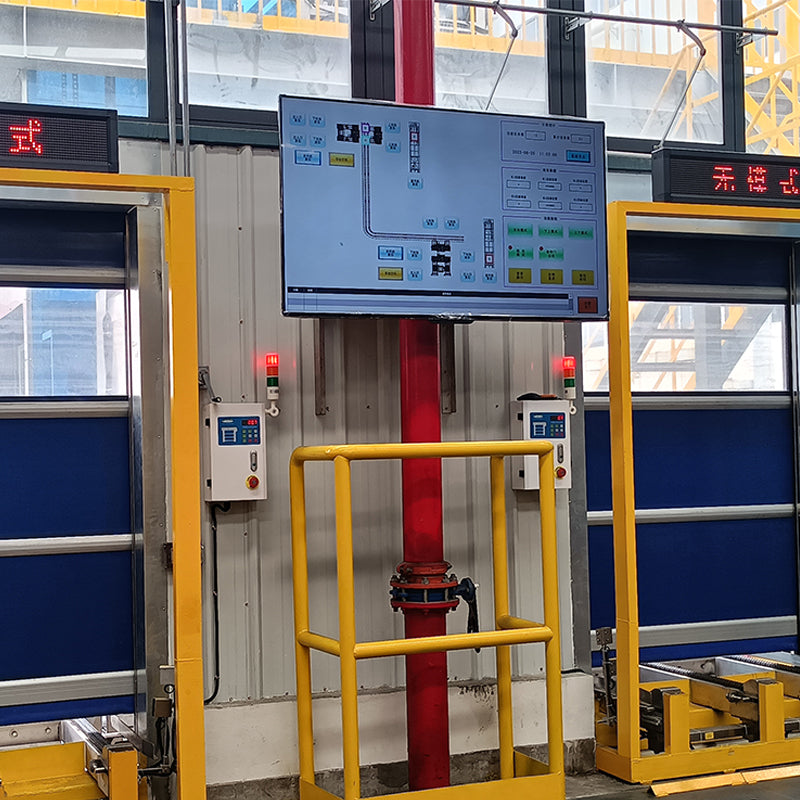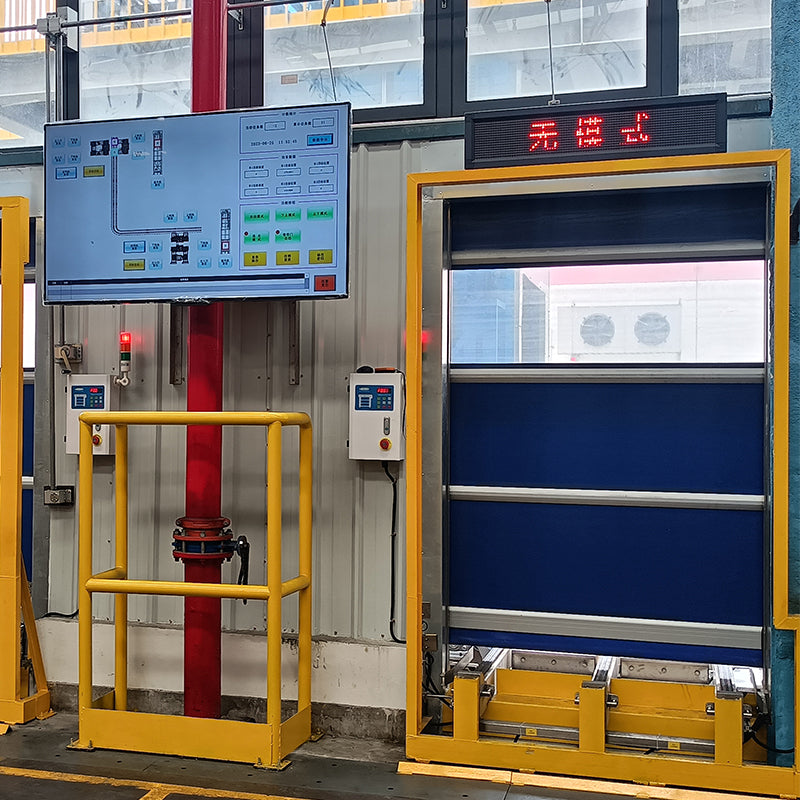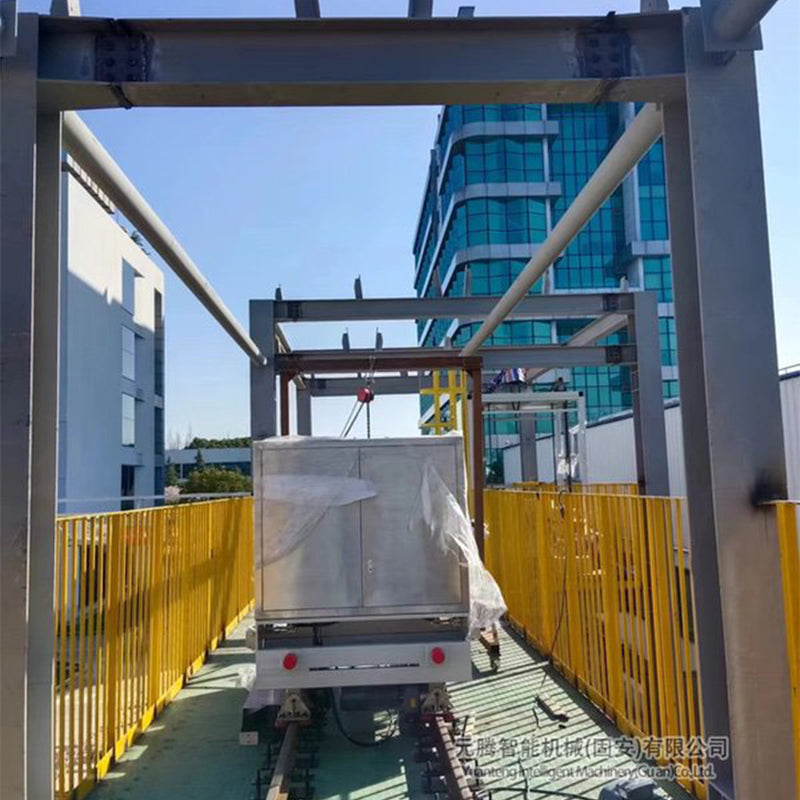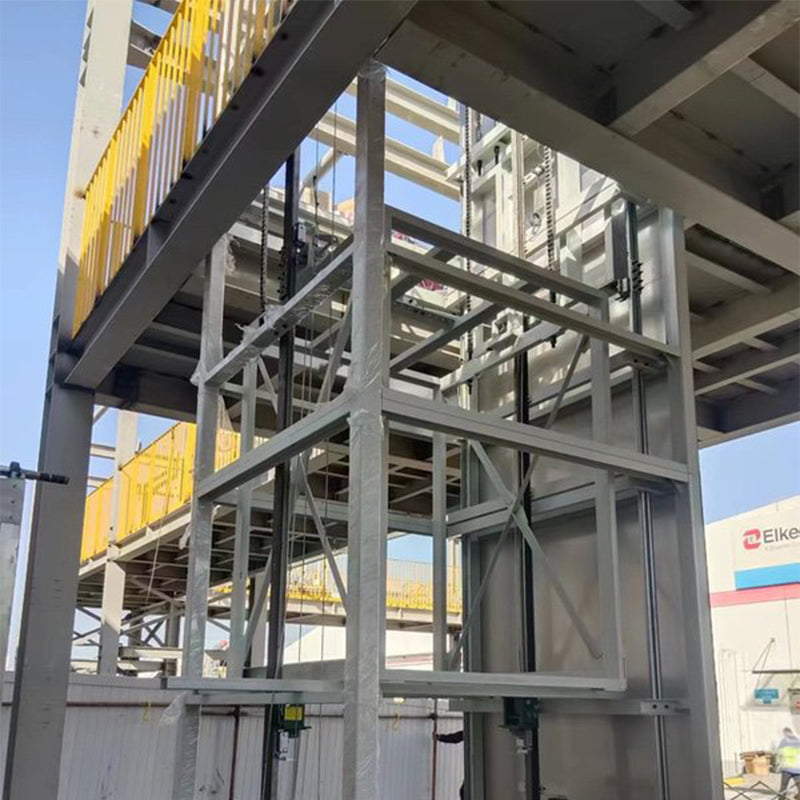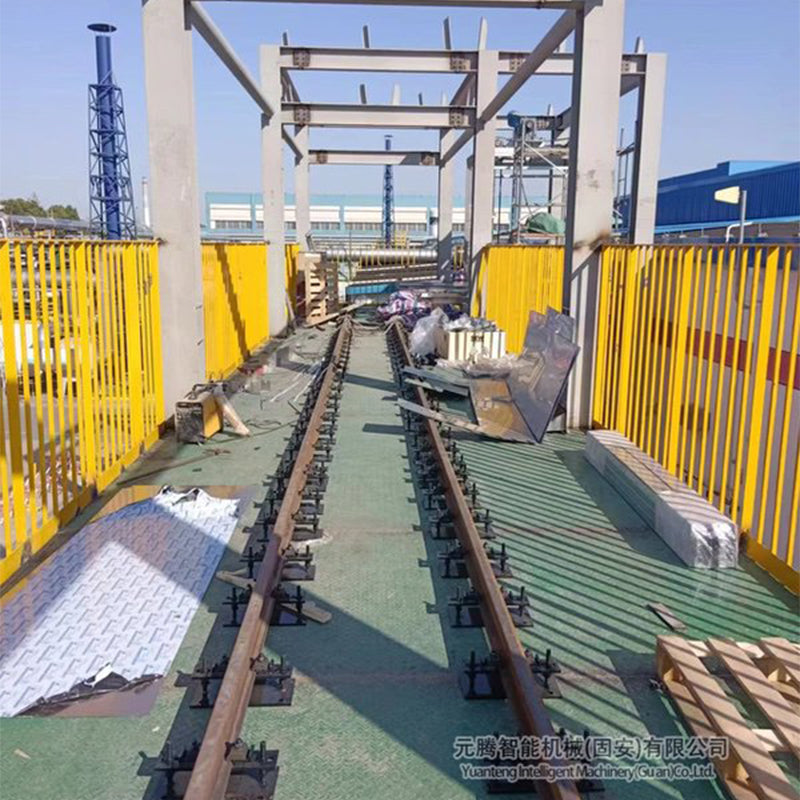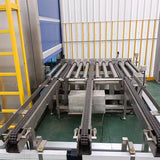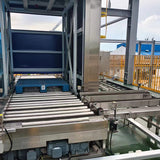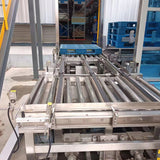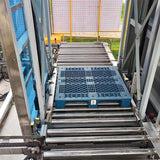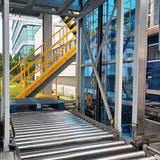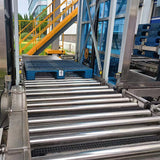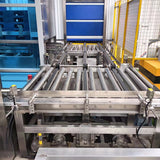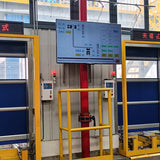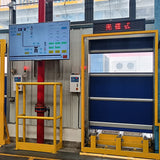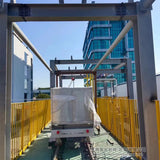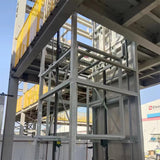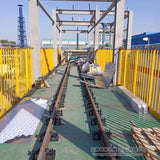Roll over or click image to zoom in
RGV+hoist+air corridor
$0.00
This equipment is mainly used for the transfer and transportation of materials between factory workshop buildings. The system mainly includes, RGV rail car part, reciprocating elevator, roller conveyor,...
This equipment is mainly used for the transfer and transportation of materials between factory workshop buildings. The system mainly includes, RGV rail car part, reciprocating elevator, roller conveyor, etc.
One RGV rail car introduction:
1. RGV is a track-guided vehicle. It is guided by guide rails on the running route and has automatic electrical control throughout the process, which can meet high-precision docking. Due to the limitation of the track, RGV is not as flexible and intelligent as the automatic guided vehicle AGV.
2. RGV trolleys do not require manual handling of goods, reducing the workload of warehouse managers and improving labor productivity. At the same time, the application of shuttle vehicles can make the logistics system simple and efficient.
3. The RGV trolley has strong ability to resist external interference, the control system is simple, and the requirements for operators are relatively broad, and the operators do not require high technical skills.
4. The RGV track trolley has high reliability and low failure rate, which greatly reduces subsequent maintenance work, has high work efficiency and greatly saves manpower.
5. The RGV rail-operated trolley has strong carrying capacity and is suitable for transporting heavy workpieces. The current mainstream RGV trolley in the market has a carrying capacity of about 1.5T, which is much higher than that of AGV.
6. The RGV/right rail trolley runs fast. Its loaded traveling speed is 0.5-0.9m/s, and its unloaded traveling speed is 1.0-1.2m/s. The S-travel trolley has low manufacturing and use costs and is widely used. Although the RGV is not as flexible as the automatic guided vehicle AGV, the manufacturing cost is not as high as the AGV; it is not as delicate as the AGV, and the RGV production run time is very long. Therefore, it is widely used in the handling industry and frequently appears on the assembly line of workshop handling.
The current automation of window mortar operation not only makes the workshop look high-end, enhances the company's image, but also demonstrates the charm of being in line with the times.
There are two modes of RGV: manual and automatic. Normally, in the automatic mode, all tasks sent by the computer to the execution layer are scheduled, and the goods are transferred from one interface to another in accordance with the instructions. The manual mode is to control the RGV/car electronically, and rely on the buttons of the remote control to realize every action of the RGV car: forward, backward, left, right, etc.
The main application scenarios of RGV
The RGV rail shuttle car can be used in various high-density storage warehouses. The track channel of the RGV rail shuttle car can be designed to be of any length and can be adapted to warehouse storage of various depths. The RGV trolley can run quickly in the roadway, and there is no need for a forklift to drive into the roadway when storing and withdrawing goods, which has higher safety and effectively improves the operating efficiency of the warehouse.
If the ends of different conveying lines are compared to ferries, then RGV plays a role similar to a ferry boat in the entire conveying process, connecting different conveying lines in the transportation route. It is widely used in long-distance transportation and complex interconnection between multiple delivery ports that need to solve costs.
2: Overview of reciprocating hoist products:
A variety of equipment can be flexibly combined and arranged flexibly to make the transportation more efficient and smooth
Efficiently connect vertical conveyor systems between different heights
The reciprocating elevator is suitable for transporting goods between multiple floors. It can be connected to a variety of automated conveying equipment and can achieve fully automated operations. Equipped with a variety of safety devices, it has the characteristics of high conveying efficiency, high precision and high stability.
The main parameters
●Maximum conveying height: 50 meters.
●Maximum load: 5000kg.
●Lifting speed: 15, 30, 45, 60, 75, 90 (m/min).
●Equipment peripherals: steel wire mesh, steel plate, color steel plate, organic glass, tempered glass.
●Standard painting color: Default medium gray, can be customized.
●Conveying opening direction: E type/Z type/L type.
Features
●High conveying efficiency and smooth operation;
*The maximum conveying capacity can reach 90 pallets per hour;
●Diversification of transported goods:
W800-2000mm
L800-4000mm
H150-4000mm
●High-precision leveling error: ±0mm
●Achieve fully automatic control, and can cooperate with AGV trolleys and conveyor lines to achieve fully automatic transportation;
Customers need to provide parameters
1. The number of floors where the elevator stops and the direction of entrance and exit
2. Increase cargo weight, size, and speed
3. Improve product characteristics: pallets, or others
4. Product pickup methods: forklift, ground cow, AGV, cart
5. What is the total lift height of the hoist?
6. Whether the hoist has a pit and whether the installation location is inside the shaft
7. Elevator entrance and exit docking method: roller, chain or other conveyor
8. Hoist operating environment and material requirements
9. Surrounding sealing plates: stainless steel, carbon steel plate, wire mesh, acrylic
10. Does the elevator have a rolling shutter door?
11. Whether to wear anti-fall device
12. Top installation space
Three: Powered roller conveyor
The roller conveyor is used to transport items with a flat bottom. It is mainly composed of a roller, a frame, a leg, a transmission and a driving device. It has the characteristics of large conveying capacity, large carrying capacity, simple maintenance, fast operation, high efficiency, and the ability to realize collinear diversion of multiple varieties. Widely used in machinery, electronics, light industry, postal service, food, wine, beverages, dairy, daily chemicals, medicine, tobacco, warehousing and logistics automation and other industries. Our company will design and manufacture various types of rollers according to different needs to meet the logistics transportation needs of customers in different situations.
1. Confirm the dimensions, weight, characteristics of the transported items, transportation occasions and environment
★Length, width and height of conveyed materials★Conveying system, especially whether the conveying surface needs anti-static treatment
★Structure type and condition of the bottom surface of the conveying logistics ★Conveying speed: constant speed, speed regulation
★Conveyor system is powered or non-powered ★Material requirements of the main structure: carbon steel spray plastic, stainless steel, aluminum profile
★How much is the weight and conveying capacity of the conveying logistics? ★Transmission mode of conveying objects
2. Selection of roller conveyor line
★In order to ensure that the material can be transferred smoothly on the roller conveyor, the material must be in contact with at least three rollers at the same time during the transfer process. The number of rollers can be increased according to the weight of the transported items.
To reduce the load-bearing of a single roller, the soft bag packaging must be transported smoothly in the form of a pallet
★Selection of drum length, namely: W=A+(50~150)mm
★ The surface of the roller can be higher than the surface of the frame without affecting the normal conveying and safety.
★According to the driving effect: the power roller is divided into touch type and accumulation type
One RGV rail car introduction:
1. RGV is a track-guided vehicle. It is guided by guide rails on the running route and has automatic electrical control throughout the process, which can meet high-precision docking. Due to the limitation of the track, RGV is not as flexible and intelligent as the automatic guided vehicle AGV.
2. RGV trolleys do not require manual handling of goods, reducing the workload of warehouse managers and improving labor productivity. At the same time, the application of shuttle vehicles can make the logistics system simple and efficient.
3. The RGV trolley has strong ability to resist external interference, the control system is simple, and the requirements for operators are relatively broad, and the operators do not require high technical skills.
4. The RGV track trolley has high reliability and low failure rate, which greatly reduces subsequent maintenance work, has high work efficiency and greatly saves manpower.
5. The RGV rail-operated trolley has strong carrying capacity and is suitable for transporting heavy workpieces. The current mainstream RGV trolley in the market has a carrying capacity of about 1.5T, which is much higher than that of AGV.
6. The RGV/right rail trolley runs fast. Its loaded traveling speed is 0.5-0.9m/s, and its unloaded traveling speed is 1.0-1.2m/s. The S-travel trolley has low manufacturing and use costs and is widely used. Although the RGV is not as flexible as the automatic guided vehicle AGV, the manufacturing cost is not as high as the AGV; it is not as delicate as the AGV, and the RGV production run time is very long. Therefore, it is widely used in the handling industry and frequently appears on the assembly line of workshop handling.
The current automation of window mortar operation not only makes the workshop look high-end, enhances the company's image, but also demonstrates the charm of being in line with the times.
There are two modes of RGV: manual and automatic. Normally, in the automatic mode, all tasks sent by the computer to the execution layer are scheduled, and the goods are transferred from one interface to another in accordance with the instructions. The manual mode is to control the RGV/car electronically, and rely on the buttons of the remote control to realize every action of the RGV car: forward, backward, left, right, etc.
The main application scenarios of RGV
The RGV rail shuttle car can be used in various high-density storage warehouses. The track channel of the RGV rail shuttle car can be designed to be of any length and can be adapted to warehouse storage of various depths. The RGV trolley can run quickly in the roadway, and there is no need for a forklift to drive into the roadway when storing and withdrawing goods, which has higher safety and effectively improves the operating efficiency of the warehouse.
If the ends of different conveying lines are compared to ferries, then RGV plays a role similar to a ferry boat in the entire conveying process, connecting different conveying lines in the transportation route. It is widely used in long-distance transportation and complex interconnection between multiple delivery ports that need to solve costs.
2: Overview of reciprocating hoist products:
A variety of equipment can be flexibly combined and arranged flexibly to make the transportation more efficient and smooth
Efficiently connect vertical conveyor systems between different heights
The reciprocating elevator is suitable for transporting goods between multiple floors. It can be connected to a variety of automated conveying equipment and can achieve fully automated operations. Equipped with a variety of safety devices, it has the characteristics of high conveying efficiency, high precision and high stability.
The main parameters
●Maximum conveying height: 50 meters.
●Maximum load: 5000kg.
●Lifting speed: 15, 30, 45, 60, 75, 90 (m/min).
●Equipment peripherals: steel wire mesh, steel plate, color steel plate, organic glass, tempered glass.
●Standard painting color: Default medium gray, can be customized.
●Conveying opening direction: E type/Z type/L type.
Features
●High conveying efficiency and smooth operation;
*The maximum conveying capacity can reach 90 pallets per hour;
●Diversification of transported goods:
W800-2000mm
L800-4000mm
H150-4000mm
●High-precision leveling error: ±0mm
●Achieve fully automatic control, and can cooperate with AGV trolleys and conveyor lines to achieve fully automatic transportation;
Customers need to provide parameters
1. The number of floors where the elevator stops and the direction of entrance and exit
2. Increase cargo weight, size, and speed
3. Improve product characteristics: pallets, or others
4. Product pickup methods: forklift, ground cow, AGV, cart
5. What is the total lift height of the hoist?
6. Whether the hoist has a pit and whether the installation location is inside the shaft
7. Elevator entrance and exit docking method: roller, chain or other conveyor
8. Hoist operating environment and material requirements
9. Surrounding sealing plates: stainless steel, carbon steel plate, wire mesh, acrylic
10. Does the elevator have a rolling shutter door?
11. Whether to wear anti-fall device
12. Top installation space
Three: Powered roller conveyor
The roller conveyor is used to transport items with a flat bottom. It is mainly composed of a roller, a frame, a leg, a transmission and a driving device. It has the characteristics of large conveying capacity, large carrying capacity, simple maintenance, fast operation, high efficiency, and the ability to realize collinear diversion of multiple varieties. Widely used in machinery, electronics, light industry, postal service, food, wine, beverages, dairy, daily chemicals, medicine, tobacco, warehousing and logistics automation and other industries. Our company will design and manufacture various types of rollers according to different needs to meet the logistics transportation needs of customers in different situations.
1. Confirm the dimensions, weight, characteristics of the transported items, transportation occasions and environment
★Length, width and height of conveyed materials★Conveying system, especially whether the conveying surface needs anti-static treatment
★Structure type and condition of the bottom surface of the conveying logistics ★Conveying speed: constant speed, speed regulation
★Conveyor system is powered or non-powered ★Material requirements of the main structure: carbon steel spray plastic, stainless steel, aluminum profile
★How much is the weight and conveying capacity of the conveying logistics? ★Transmission mode of conveying objects
2. Selection of roller conveyor line
★In order to ensure that the material can be transferred smoothly on the roller conveyor, the material must be in contact with at least three rollers at the same time during the transfer process. The number of rollers can be increased according to the weight of the transported items.
To reduce the load-bearing of a single roller, the soft bag packaging must be transported smoothly in the form of a pallet
★Selection of drum length, namely: W=A+(50~150)mm
★ The surface of the roller can be higher than the surface of the frame without affecting the normal conveying and safety.
★According to the driving effect: the power roller is divided into touch type and accumulation type











